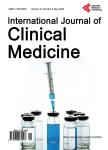Prevalence and Sex Distribution of Temporomandibular Disorder and Their Association with Anxiety and Depression in Indian Medical University Students
Prevalence and Sex Distribution of Temporomandibular Disorder and Their Association with Anxiety and Depression in Indian Medical University Students作者机构:Department of Orthodontics SGT Dental College Gurgaon India Department of Oral and Maxillofacial Surgery SGT Dental College Gurgaon India
出 版 物:《International Journal of Clinical Medicine》 (临床医学国际期刊(英文))
年 卷 期:2015年第6卷第8期
页 面:570-578页
学科分类:1002[医学-临床医学] 100201[医学-内科学(含:心血管病、血液病、呼吸系病、消化系病、内分泌与代谢病、肾病、风湿病、传染病)] 10[医学]
主 题:TMD Helkimo Index HAD Scale Anxiety
摘 要:Objectives: The term TMD refers to a group of disorders characterized by pain in the temporomandibular joint and associated structures. The aim of this study was designed to evaluate prevalence, severity and sex distribution of sign and symptoms of TMD and to evaluate their relation with anxiety and depression among the students. Material and Methods: A total of 1000 university students were enrolled in the study (550 females;450 males), with ages ranged between 18 and 28 years. Helkimo anamnestic index (Ai) and clinical dysfunction index (Di) were used to determine symptoms and signs respectively. For the association of TMD with anxiety and depression, HAD (Hospital Anxiety and Depression) scale was used. Results showed that prevalence of one or more symptoms of TMD was 27.7%, while the prevalence of one or more signs of TMD was 64.4% which was mild in severity. Mild anamnestic symptoms (AiI) were found in 19.8% and severe symptoms (AiII) were found in 7.6%, while mild clinical sign (DiI), moderate clinical (DiII) and severe clinical sign (DiIII) were found in 49.7%, 12.2% and 2.4% respectively. Statistically there was no gender difference in these two scales. Regarding the association between TMD with anxiety and depression, 206 of the 311 students (66.2%) with TMD symptoms also had signs of anxiety and depression (P 0.001). Conclusion: These findings confirmed that students had high prevalence of TMD which was significantly associated with anxiety and depression.



